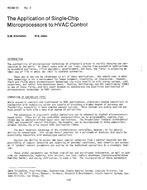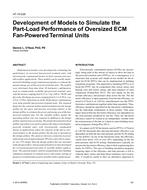In response to a series of legislative mandates and executive orders, the US federal government reduced the energy intensity of these buildings by nearly 30%, from 139,840 Btu per square foot in 1985 to 98,171 Btu per square foot in 2006 (USDOE 2008). The cost of achieving this result was approximately $7.3 billion, which represents the total investment in federal energy efficiency projects over the period. Approximately 43% of the funding came from private sector financing. Governments in other countries and municipal/state governments, universities, schools and hospitals are also leveraging private financing to help meet energy goals. This paper describes the financial analysis of privately financed energy efficiency projects as they are implemented through Energy Savings Performance Contracts (ESPCs) at US federal government sites. In an ESPC, an Energy Services Company (ESCO) obtains private financing to design and build an energy conservation project at a government site. The ESCO and the government agency agree on the utility and other savings the project will generate, and on the methods that will be used to measure and verify those savings. The ESCO implements the project, and the government pays the ESCO from the savings generated. It is shown that four key parameters in ESPC economics are the implementation price, the project interest rate, the escalation rate of energy savings, and the amount of the ancillary payment from savings.
Citation: ASHRAE Transactions, 2010, vol. 116, pt. 2, Albuquerque, NM
Product Details
- Published:
- 2010
- Number of Pages:
- 7
- File Size:
- 1 file , 690 KB
- Product Code(s):
- D-AB-10-004


